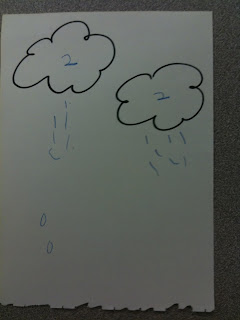

Karen's HSP class is composed of a variety of students, all at different levels of ability. She has been trying out problem solving in her class and has been surprised at the results. She has been encouraging the students to use a graphic organizer (seen above) to help her students comprehend what is being asked of them.
Karen is finding that the level of engagement her students have has increased since they started doing problems. As well, she admits that the first few times made her want to pull her hair out - But - now that the students have more schema to draw upon, they are achieving success and doing so independently.
The second picture shows some student samples from a problem that the class had done around fractions.











